The Catholic Church and Fascism: Behind the Scenes of the Lateran Treaty
The Catholic Church and Fascism: Behind the Scenes of the Lateran Treaty
Some critics, including Protestant and atheist groups, claim that the Catholic Church negotiated and signed the Lateran Treaty with Benito Mussolini as a way of supporting fascism. However, such a claim does not hold up, since reconciliation between the Church and the Italian State had already been sought beforehand, as expressed by Pope Benedict XV. In his allocution In hac quidem, addressed to the cardinals gathered in secret consistory, Benedict XV declared:
“We also see that some States, after such grave and radical political upheavals, have been transformed to the point that they can no longer be considered the same moral person with whom the Apostolic See had previously dealt. Hence it naturally follows that the pacts and agreements formerly made between the Holy See and these States are no longer valid. However, if the Heads of these Republics and States wish to enter into new agreements with the Church, more suited to the new political circumstances, let them know that the Holy See—unless some particular obstacle prevents it—does not object to negotiating with them, just as it is already negotiating with certain nations.”
Following this disposition, Benedict XV sent Monsignor Bonaventura Cerretti to the Paris Peace Conference in 1919 to meet with Prime Minister Vittorio Emanuele Orlando and propose that Italy grant sovereignty and independence to the Vatican. Orlando accepted the proposal and began negotiations with the Holy See toward that end. However, King Victor Emmanuel III blocked the agreement, resentful of the Holy See's neutrality during the First World War—an attitude he interpreted as tacit support for the Austro-Hungarian Empire.
Benito Mussolini, in a speech delivered in the Parliament of the Kingdom of Italy on May 13, 1929, recounted: “Monsignor Kelley was supposed to depart for America the next day, but since the ship's departure was delayed by two days, between May 18 and 20, Brambilla—five times, in Orlando’s name—urged the prelate that, instead of returning to America, he go to Rome to report to the Cardinal Secretary of State. Monsignor Kelley finally agreed and arrived in Rome on May 22. That same day he went to the Vatican to meet with Monsignor Cerretti, then Secretary for Extraordinary Ecclesiastical Affairs, who immediately took him to Cardinal Gasparri, to whom he explained everything in full detail.”
The Cardinal Secretary of State and Monsignor Cerretti immediately went to the Pope and, about an hour later, returned with the decision that Monsignor Cerretti himself would leave for Paris on May 24 to meet with Vittorio Emanuele Orlando. Monsignor Kelley would accompany him, but would no longer deal with the Roman Question.
On June 1, as agreed with Brambilla, Monsignor Cerretti met with the Honorable Orlando in room 135 of the Hotel Ritz. Orlando fully confirmed the conversation he had previously had with Monsignor Kelley. Cerretti then presented him with a brief outline of the Roman Question and its possible solution, handwritten by the Cardinal Secretary of State. After reading the document, Orlando declared that he accepted the proposed terms in principle, and the main points were discussed.
One of the central topics concerned the territorial extent desired by the Holy See. The memorandum suggested that the delimitation begin from a river—to ensure a natural border—including villages and other relevant areas outside the limits of the Vatican. Orlando, however, preferred that the territory begin within the Vatican itself and extend behind it, avoiding the inclusion of densely populated areas of the city. It was then concluded that the question of territorial extent could be negotiated at a later stage, once the foundational terms had been established.
Another major point was the need for international recognition. The memorandum stipulated that the papal territory should be guaranteed by other nations. Such a guarantee could be sought through the newly created League of Nations, in which many at the time placed great hopes. Orlando suggested that Italy itself would promote the Holy See's entry into the League for this purpose.
On June 9, Brambilla, on behalf of Orlando, informed Monsignor Cerretti that the president had entrusted the Honorable Colosimo with presenting the plan to the ministers and the king. Indeed, the newspapers of the time announced that Colosimo had been received by the sovereign.
However, on June 15, Orlando returned to Rome and, facing a vote in the Chamber, found himself in the minority and resigned from office. The full documentation of these negotiations is found in the notes written by Monsignor Kelley and Monsignor Cerretti, the latter by then already elevated to the cardinalate. These notes were later presented to Orlando himself, who deemed them entirely accurate. Conversations with Orlando’s successors—who belonged to the pre-Fascist period—did not differ fundamentally from those held with Orlando himself and were, in fact, less relevant than those conducted by him.
After his election in the 1922 conclave, Pope Pius XI appeared on the balcony of St. Peter’s Basilica without uttering a word, merely to give the Urbi et Orbi blessing. This gesture broke with the tradition of his predecessors, from Leo XIII to Benedict XV, who customarily delivered a public address at that solemn moment.
On February 16, 1922, shortly after being elected, Pius XI granted an audience to Baron Carlo Monti, the official representative of the Kingdom of Italy to the Holy See during Benedict XV’s pontificate. The author Giovanni Cocco reports:
“In the months that followed, meetings with Baron Monti were always marked by cordiality, and the Italian minister noted that, regarding Italy—unlike Benedict XV, who had been educated in another school, that of Leo XIII and Cardinal Rampolla—Pius XI seemed free of prejudice and prior conditioning.”
In this way, the new pontiff demonstrated his disposition to resolve the Roman Question, eight months before Benito Mussolini rose to power.
On August 8, 1926, Pius XI authorized the beginning of negotiations for the signing of a treaty, imposing as a prerequisite the international recognition of the Pope’s absolute sovereignty over the territory to be granted to him. The Holy See wished to include other nations in the process, in order to internationalize the decision and ensure broader diplomatic support.
Mussolini, in his May 13, 1929, speech before Parliament, revealed the contents of a letter sent to lawyer Pacelli (the future Pius XII) by His Eminence Cardinal Secretary of State Pietro Gasparri. In it, Gasparri stated: “This may already assure us that the conviction regarding the usefulness and importance of eliminating any reason for disagreement between Italy and the Holy See could not be, for either party, deeper or more sincere, as has been shown in repeated solemn documents.”
On October 24, 1926, Gasparri laid out four fundamental conditions:
1. The legal status to be granted to the Holy See should be consistent with its dignity and with the principles of justice.
2. This status should ensure full freedom and independence—not only real and effective but also visible and manifest—with a territory of full and exclusive ownership, both in domain and in jurisdiction, as befits true sovereignty, inviolable under any circumstance.
3. Since this was a matter that transcended Italian borders, it was essential that the new territorial configuration be recognized by other powers.
4. It would be the responsibility of the Italian government to obtain, at least in principle, such recognition from the European powers with which the Holy See maintained diplomatic relations, even before beginning official negotiations.
According to Giovanni Cocco, the Sacred College was only informed of the imminent reconciliation on November 18, 1928, just a few months before the signing of the Lateran Pacts. All the Curial cardinals were summoned to the apartment of the Secretary of State, where Gasparri read a generic statement regarding the negotiations underway, announcing the forthcoming conclusion of an official agreement—without, however, disclosing any concrete details. Although the cardinals did not voice immediate objections, many were perplexed and disoriented by this anomalous modus operandi, which deprived them of prior knowledge of the Pacts’ content.
Historian David Kertzer adds:
“In fact, the cardinals would only read the text of the Lateran Treaty on February 11, 1929—the very day the document was signed and made public.”
Cesare Maria De Vecchi recounts a journey he took with several cardinals of the Roman Curia, during which he sought to hear their opinions on the treaty. According to him: “Before the visit, I had already informed myself of their ideas regarding the conciliation, which proved particularly useful in initiating discussions about the conflicts between the Vatican and the Government. In general, all were aligned with our perspective, and many of their intentions did not substantially differ from Mussolini’s own. I also noticed that the College of Cardinals, in general, respected and feared the Pope. Not all, however, were enthusiastic about the manner in which the 'Roman Question' was resolved. Within the Vatican, there were two blocs: one favorable, and another dissatisfied, which criticized the Concordat—and naturally, the Pope who had signed it. The criticisms varied in tone: some were mild and respectful; others were frankly ruthless and venomous.
I must say, however, that in the College of Cardinals there was more support than opposition. Nonetheless, the critics expressed themselves with unheard-of violence. The Roman black nobility was no less biting than certain cardinals who, rightly or wrongly, also seemed to have motives for disapproving of the Holy Father's initiative. The harshest and most cruel statement was made by Prince Ruspoli, who then held a high position in the Vatican. He declared: ‘I regret that we are no longer in the Middle Ages, for then we could administer a little poison to this Pope!’”
Cesare Maria De Vecchi reported that he became aware of opposition among members of the clergy to the conciliation through confidential communications from various prelates. In his own words:
“The fervent campaign, though silent toward us, was clearly being waged within the Church by several of these cardinals against the conciliation that materialized.”
De Vecchi also states that he had the opportunity to bring these criticisms to both the Secretary of State of the Holy See and to the Pope himself, who, according to him, “already harbored some suspicions, if not full awareness, based on the evidence I held in my hands.”
Among the declared opponents of the Treaty were Cardinals Rafael Merry del Val, Tommaso Pio Boggiani, Basilio Pompilj, Lorenzo Lauri, Gaetano Bisleti, and Bonaventura Cerretti—all of whom were critical of how the matter was resolved.
Arnaldo Mussolini, in a letter to his brother Benito dated February 7, 1929, wrote:
“Dear Benito, Father Dr. Paolo De Töt spoke to me about the disappointment of Cardinals Boggiani and Merry del Val at having been completely excluded from the ongoing negotiations for the Concordat between the State and the Church in Italy. I did not quite understand the reason for this move against the Jesuits, who wished to monopolize the recent negotiations. Since we are dealing with cardinals, I thought it appropriate to inform you of their state of mind.”
Cesare De Vecchi reported that he told Pope Pius XI: “I reported to him, for example, that Cardinal Lauri had said that the Concordat and the Lateran Treaty were made by a fool and a cunning man. The fool was His Holiness, Pope Pius XI; and the cunning man, Your Excellency.”
Cardinal Merry del Val, visibly resentful for having been left out, quipped:
“Of course the Concordat was made by a mountaineer, His Holiness. In fact, it was made with his feet!”
Cardinal Lauri himself, just days before the Pontifical Eucharistic Procession in St. Peter’s Square, publicly lamented having to
“suffer the humiliation of attending and participating in the Pope’s exit into St. Peter’s Square.”
Giovanni Cocco reports: “According to confidences gathered from Monsignor Luigi Maglione, then nuncio in Paris and on leave in Rome, Cardinals Pompilj, Merry del Val, and Bisleti harshly criticized the policy of Pius XI and the contempt the pontiff seemed to feel toward them and toward the College of Cardinals.”
One day after the signing of the treaty, a rumor began to circulate—not only in the Vatican but also throughout much of the Catholic world—that the Pope had been deceived. Together with other influential men of the Roman Curia, Cardinal Merry del Val blamed Cardinal Pietro Gasparri, Secretary of State of the Holy See, who in fact found himself increasingly troubled by reports reaching the Vatican from police departments and carabinieri hostile to the regime, regarding persecutions, kidnappings, and harassment suffered by Catholic associations.
According to a dossier from the fascist political police (OVRA) on Cardinal Merry del Val,
“his attitude toward fascism appears to waver.”
Although he had supported fascism during its rise, he turned against Mussolini in the aftermath of the treaty. In any case, the spies still judged him
“quite willing to make himself once again appear pro-fascist, if the Italian government were to support him in his boundless ambition.”
Certainly, between September and October 1929, a series of reports indicated that Cardinal Merry del Val was not only dissatisfied and concerned about the political situation in Italy in general, but also with the policy implemented by Pius XI toward the Mussolini government. According to the dossier, the cardinal declared:
“The situation of the papacy and the internal situation in Italy is very critical. The papacy, sooner or later, will be forced to retreat, while the internal state of our country is described abroad as disastrous—something no one here can imagine. It is not so much the financial crisis, but the moral crisis—of oppression and latent discontent—that frightens foreigners.”
Cardinal Pompilj, for his part, had not agreed with the Pope’s decision to entrust Francesco Pacelli with a leading role in relations between the Holy See and the Kingdom of Italy. He wished for a significant portion of the city of Rome to be included in the territory assigned to the Pope by the treaty. Kertzer reports:
“Like several of his peers in the Eternal City, the seventy-year-old Pompilj viewed Mussolini as no more trustworthy than previous prime ministers, and no more Catholic than any of them. The fact that Pius XI had abandoned that claim and, in the cardinal’s eyes, received so little in return, was a scandal—a sentiment shared not only by Pompilj’s close friends but by a broader circle of acquaintances.”
Cardinal Pompilj complained:
“They handed over Rome—its prestige, its historical significance, its monuments, its churches—as if they were dealing with an Abyssinian village.”
To Cardinal Pompilj, the Pope was “incompetent, weak, the plague and the ruin of the Church, which he betrayed by putting himself at the mercy of a government that does not even remotely deserve the name Catholic.”
Pius XI repeatedly insisted that the cardinal show more respect for the papacy. However, as Pompilj’s vehement protests continued to circulate, the Pope lost his patience and asked him to resign. The cardinal responded:
“Holiness, you have the power to remove me from office, and do so if you wish. But until the day I die, I shall never step down of my own accord from this office I have held for so long, and from which I have never proven myself unworthy.”
A few months later, faced with a renewed appeal from the Pope, Pompilj held firm once more:
“I will keep shouting the same thing until you can’t bear it anymore: I’m not leaving, I’m not leaving, I’m not leaving.”
The cardinal also replied to those who wished to see him removed: “Do not remove me. You will remove me because I am telling the truth.” Cardinal Pompilj was even threatened by fascists. Cardinal Cerretti, for his part, was initially unsympathetic to the Concordat, placing all his hopes in the treaty. Kertzer writes: “Cerretti’s sympathy for the democratic countries and for the Popular Party in Italy was well known, and—as Pius XI knew full well—he opposed the agreement the pontiff had made with Mussolini.”
Cocco, citing a report dated June 15, 1929, from the Ministry of the Interior, adds: “Cerretti said, among other things, that the Pope had let Mussolini eat the jelly off his head.”
After the Sacred College was informed of the treaty’s signing, Cardinal Cerretti—then aboard a ship returning from Australia—did not hide his indignation, as Kertzer also reports. However, Cerretti would eventually change his mind. As Cocco writes: “The most significant conquest for the fascist regime was represented by Cardinal Bonaventura Cerretti, who had once been firmly opposed to the Lateran Pacts. On February 15, 1932, on the occasion of the tenth anniversary of Pope Ratti’s election, the cardinal gave a speech at the San Pietro Club, in which he spoke enthusiastically of the work of conciliation.”
Monsignor Domenico Tardini, who had participated in the treaty negotiations, was initially in favor, but changed his opinion five years after the signing. He said:
“This concordat might give the impression, to other nations, of the Holy See being flattened under the foreign policy of the Italian government, whereas, on the contrary, it was precisely the rupture with Italy that guaranteed the Pope's independence.”
He also criticized the organization of the new Vatican State:
“So tiny and so pretentious, so poor and so wasteful, so Lilliputian and so saturated with employees, and poor in wages.”
Monsignor Tardini questioned:
“Does this display of careerism, idiocy, and parasitism by those who nestle in the fabric of Vatican City benefit the Holy See?”
To him, the text of the concordat was excessively complex, composed of
“around forty articles, with such varied provisions, such complex things,”
which would inevitably generate—quote—
“misunderstandings and struggles at every moment.”
Not even the Pope’s famous expression, simul stabunt, simul cadent—by which he inseparably bound the Concordat to the Treaty—convinced him:
“Experience should have taught us something: all concordats are destined to be violated and, eventually, to fall. So what will be the result of having upheld for years the inseparable link between the Concordat and the Treaty?”
Father Paolo de Töth, endowed with a solid theological formation based on the thought of Saint Thomas Aquinas and Saint John of the Cross, was described as
“one of the proudest exponents of the Counter-Revolution in contemporary Italy.”
Editor of the journal Fede e Ragione, he feared a compromise solution that would place the Church at the service of the interests of the
“non-Catholic State born from the National Revolution of the Risorgimento”—
especially of certain strands to which fascism appeared to be linked.
In the columns of Fede e Ragione, on May 19, 1929, he commented on Mussolini’s speech, delivered on May 13, stating that after a long pilgrimage, people were still stuck in Febronius—a critical allusion to the heresiarch Febronius Justinus. He argued that it was not proper to speak of a “Catholic State,” but, at most, of a “concordat State,” since a concordat State could also not be Catholic—as was the case with Czechoslovakia. He concluded:
“The fear of God, which in practice resolves into fear of the Church, brings no blessing.”
Father Luigi Sturzo, for his part, published in the newspaper The Review of Reviews, on February 15, an article insinuating rumors
“of a possible, though doubtful, solution to the Roman question.”
Later, in the October 15 edition of the same paper, Sturzo wrote:
“If it is true, as they say, that the Pope, in conceiving the concordat, believed he could restore the Catholic State in Italy, he undoubtedly made a great mistake. Because, while the fascists like it—and it is advantageous for them to pass as Catholics and proclaim the rights of religion—it is well known to all that, in general, neither their conception of life nor their ideal of the State has anything to do with Catholicism as religion and morality. They conceive of a State supported by the Church, but by a Church that serves and does not rule, that helps and does not demand.
The Catholic State in fascist Italy never existed and never will exist, because the two theories are opposite and irreconcilable. Therefore, two policies with different ends are clashing. The Pope tends toward the Catholic State, of which the concordat is an expression; Mussolini, toward the fascist State, of which the concordat is an instrument.
The Pope, although he tries to avoid confrontation, cannot help defending the clergy and Catholic youth from fascist political interference. But Mussolini will never renounce the idea that the education of youth and the work of the clergy must serve fascism and follow its orientation.”
Sturzo concluded with a sharp warning:
“Today, the men of conciliation indulge in enthusiastic phrases and outward displays. Very soon, cold reasoning will take over; and many—if not all—will see the dangers inherent in an idyll that blossoms on the tomb of liberty.”
In his speech to the Senate on May 25, Mussolini commented with irony that a priest had complained about the size of Vatican territory:
“Father Semeria, in Trieste, called the territory ‘I see you and I don’t see you.’”
The philosopher Benedetto Croce, in turn, wrote in his book For the New Life of Italy a scathing critique:
“No one can forget Pius XI, who praised the man of Providence with whom he made the infamous agreements — as if to signify a kind of mystical-political pact between the Church and fascism.”
However, what Pope Pius XI actually said in his allocution Vogliamo anzitutto — during an audience granted to professors and students of the Catholic University of the Sacred Heart of Milan on February 13, 1929 — was the following:
“And at times we were tempted to think — as we say to you with happy confidence, yes, good sons — that perhaps a mountaineer Pope was needed to resolve the question, a mountaineer immune to vertigo and used to facing the steepest climbs. Just as at times we thought that perhaps a librarian Pope was also necessary, accustomed to delving deep into historical and documentary research, because it is evident that many books and documents had to be consulted. We must say that we were also nobly supported by the other side. And perhaps we also needed a man like the one whom Providence made us encounter: a man who did not have the concerns of the liberal school — for whom all these laws, all these orders, or rather, disorders, all these laws, let us say, and all these regulations, were so many fetishes. And, like fetishes, the more untouchable and venerable, the uglier and more misshapen they are.”
Stefano Jacini, on March 25 of the same year, visited the Pope for a conversation. In this meeting, which lasted seventy minutes, the two spent much of the time discussing the conciliation. Pius XI stated:
“Situation resolved. Yes, I am very satisfied. But now comes the difficult part: making the clauses be applied. We have never needed prayers as much as we do now, but the future is in God’s hands. One cannot expect me to be able to guess what lies ahead.”
Knowing that Jacini had been a member of the Italian Popular Party, Pius XI justified himself, saying that he could not miss the opportunity, for if he did, history would judge him harshly. He complained about the criticism he had been receiving for having celebrated an agreement with Mussolini’s government:
“It is like saying that someone must stop breathing because they are in a room where the air is polluted.”
Mussolini, for his part, in his speech of May 13, remarked:
“If throughout 1927 things stagnated and everything was limited to maintaining personal contacts, it was due to the dispute over the education of younger generations, the issue of the Catholic scouts — a question whose solution you know. Another regime, which is not ours — a demoliberal regime, one of those we despise — might find it useful to give up the education of the younger generations. We do not. In this field, we are unyielding. Teaching must be ours. These children must be educated in our religious faith, but we must integrate this education; we must give these young people a sense of virility, of power, of conquest; above all, we must inspire them with our faith and inflame them with our hopes.”
Francesco Pacelli, in his Diario della Conciliazione, recorded that Pius XI was “deeply embittered by the speech.”
In his allocution Ecco una, addressed to the teachers and students of the Mondragone college on May 14, Pius XI responded directly to Mussolini’s words:
“The mission of education belongs, above all, to the Church and to the family — to the Church and to fathers and mothers. It belongs to them by natural and divine right and, therefore, in an inevitable, ineluctable, and irreplaceable way. The State was not made to absorb, swallow, annihilate the individual and the family. That would be absurd, it would be against nature, for the family comes before society and the State. The State cannot, therefore, neglect education, but must contribute and provide what is necessary and sufficient to help, cooperate, and perfect the work of the family, fully meet the desires of the father and mother, and above all respect the divine right of the children of the Church.
In a certain sense, one could say that the State is called to complete the work of the family and the Church, because the State, more than anyone else, has the means at its disposal for the needs of all, and it is its duty to use them for the benefit of those from whom they come. It is then quite clear that the State, in the field of education, can very well provide conscious professionals and salaried workers, but it can never provide vocations — lives consecrated to education in full and total dedication.”
“We are not the ones to say that, in order to carry out its work in the field of education, it is necessary, convenient, or appropriate for the State to raise up conquerors, to promote conquests. What is done in one State can also be done throughout the world. And if all States were to rise up to conquer, what would happen? That would not contribute to general appeasement, but rather to general conflagration.
Unless one intends to say (and perhaps that is precisely what was meant) that the desire is to promote the conquest of truth and virtue — in which case we are in full agreement. But where we can never agree is in anything that attempts to suppress, diminish, or deny that right which nature and God have given to the family and the Church in the field of education.
On this point, we do not mean to say that we are unyielding — also because unyieldingness is not a virtue — but only intransigent. Just as we could not help being intransigent if asked how much is two plus two. It makes four, and it is not our fault if it does not make three, or five, or six, or fifty.
When it comes to saving some souls, to prevent greater harm to souls, we would feel the courage to deal even with the devil himself. And it was precisely to prevent a greater evil that — as everyone well knows — we at a certain point discussed the fate of our beloved Catholic scouts. We made sacrifices to avoid even greater evils, but we made it clear, and documented, all the pain we felt for having been forced to do so.”
The Vatican newspaper L’Osservatore Romano, in its May 16 edition, described Mussolini’s views as “heretical and worse than heretical.” Pius XI, through diplomatic channels, demanded a clarification from Mussolini regarding his May 13 speech in Parliament, expecting that he would do so in his upcoming address to the Senate, scheduled for May 25.
Mussolini, in his speech to the Senate, responded to Pius XI’s allocution at the Mondragone College:
“To say that education belongs to families is to say something out of touch with contemporary reality. The modern family, besieged by economic needs, oppressed daily by the struggle for life, is unable to educate anyone. Only the State, with its means of all kinds, can fulfill this task. I add that only the State can also provide the necessary religious instruction, integrating it into the body of other subjects.
What, then, is the education we claim in a totalitarian manner? The education of the citizen.”
Pius XI, in a letter addressed to Cardinal Gasparri on May 30, replied to Mussolini’s speech:
“From this can come no harm to the real rights or, rather, to the duties of the State with regard to the education of citizens — always without prejudice, of course, to the rights of the family. The State has nothing to fear from the education given by the Church and under its direction. It was this education that prepared modern civilization insofar as it is truly good, insofar as it is higher. The family immediately perceived this, and from the earliest days of Christianity until today, fathers and mothers — even when they have few or no believers — send and bring their children by the millions to educational institutions founded and directed by the Church.
Even less, if possible, than the State, does science, the scientific method, scientific research, or the higher and more advanced developments of religious education have anything to fear. Catholic institutions, whatever the level of instruction and science to which they belong, have no need of apologies.”
Mussolini continued in his speech, turning to Catholic authors to legitimize his positions:
“Moreover, men of clear Catholic doctrine, such as Monsignor Battifolle, in his book L’Église naissante et le catholicisme, rejected the Protestant thesis condensed in the triad: Christianity, Catholicism, Romanism — a thesis strongly adopted by Renan. But he himself admits in this book, now in its fifth edition, that the cooperation of Rome in the mission of the Cathedra Petri was providential. ‘And we,’ says the author, ‘will not have the poor taste to contest it.’ We do, he adds, have our reservations regarding the political terms used to describe it, as well as regarding the tendency to transform what was merely a circumstance into a generative function.”
Mussolini also cited another Catholic author, Duchesne, in Histoire ancienne de l’Église:
“I mention the Frenchman because, for some time now, Italian Catholicism has not been fruitful; the intellectual production in this matter is elsewhere. Recently, we have had only a translation, again from the French: La primauté du spirituel, by Maritain. Duchesne begins this book, written in Rome in 1905, with a chapter titled ‘The Roman Empire, Homeland of Christianity,’ and on page 10 adds: ‘From what has been said, it follows that the spread of Christianity found in the situation of the Roman Empire both facilities and obstacles. Among the former, one must include the universal peace, the uniformity of languages and ideas, the speed and safety of communications. Philosophy, by the blows it dealt to the old legends, and by its impotence to create something to replace them, can be considered a useful ally (...)’ Finally, ‘the oriental religions, by offering some nourishment to religious feeling, prevented it from dying and allowed it to resort to evangelical rebirth.’
Of course, he adds, there were obstacles, namely the intermittent persecutions by the Roman emperors, the spirit of reasoning of Greek philosophy — which seized upon the doctrinal elements of Christian teaching and brought to light a hundred different heresies.”
Mussolini concluded the citation:
“In the time of the Antonines, Rome was the melting pot of the entire Christian world. As the author himself says: ‘All the heads of the communities gathered in Rome, all the most characteristic figures were there.’ On page 241, he mentions: ‘Polycarp, the patriarch of Asia; Marcion, the fierce sectarian from Pontus; Valentinus, the great master of Alexandrian gnosis; Hegesippus, the Judeo-Christian from Syria; Justin and Tatian, philosophers and apologists. It was like a microcosm, a synthesis of all the Christianity of the time.’”
Pius XI replied:
“We say: frustrated expectation, because the long — though not always easy — negotiations had opened our minds to the best hopes. And we could even less have expected to hear, in an official context, heretical — and worse than heretical — expressions regarding the very essence of Christianity and Catholicism.
An attempt was made to remedy this: it does not seem to us to have been successful. To distinguish, as seems to be done, between historical and doctrinal affirmation would be, at the very least, to fall into the error of the most condemnable modernism. The divine mandate to the universal peoples predates Saint Paul’s calling; already in the episode of Saint Peter with the Gentiles one sees the universal opening of salvation. Universality is present by right and by reality from the earliest days of the Church and of apostolic preaching.
Through the work of the apostles and apostolic men, the Gospel spread far beyond the borders of the Roman Empire — which, as is well known, did not encompass the entire world. It would suffice to recall the providential usefulness of the imperial organization for the expansion and organization of the Church, as was said, with unsurpassed elevation, by two great Italians: Dante Alighieri and Saint Leo the Great.
In few and magnificent words, they carved the substance of an argument that others later treated with an erudition not always free from inaccuracies and errors, often under the influence of Protestantism and Modernism.
To have contented oneself with such voices — Dante and Leo the Great — would also have avoided citing and even praising a book that, since 1912, has been included in the Index of Prohibited Books (Histoire de l’Église ancienne).
And to say, with almost justified disdain, that for some time Italian Catholicism has not been fruitful, as if intellectual production had completely migrated elsewhere, is a judgment far too hasty to be true — and all the less just — to the honor of Catholicism in Italy and of Italy in Catholicism.”
Mussolini, for his part, doubled down in his inaugural speech at the VII International Congress of Philosophy:
“In one of the papers to be presented at this Congress — which I will have the pleasure and great honor of inaugurating tomorrow — someone addresses precisely this issue and makes some interesting observations. ‘Today we are far,’ he says, ‘from the time when Father Cornoldi, in 1881, claimed that all modern philosophy is the pathology of human reason.’ Exaggerated! We must not believe that there are no longer individuals who still think this way, but there are also those who have come over to our side.
In the list of authors — he says — to be proscribed, Spinoza must obviously be included.”
But who is the greatest biographer and scholar of Spinoza today? He is a Jesuit of great spiritual insight: Dunin Borkowski. And the Catholic University of Milan dedicated a volume of studies to Kant, and the Rector of that University, so dear to the highest Catholic hierarchies, advocates the study of Kant and admits the recognition of his greatness as being compatible not only with the Christian sentiment, but also with Thomistic philosophy, of which the Rector of the Catholic University of Milan is an exponent.
After all, it is enough to leaf through the course program of the Catholic University of Milan for the current academic year to find that Father Chiocchetti has read the Critique of Pure Reason, and Father Cordovani has read the first book of Spinoza’s Ethics, the De Deo. And so Father Chiocchetti, just like Professor Casotti, dealt with Antonio Rosmini.
Nor should it be said that these studies are conducted only at the Catholic University of Milan, so dear to those who occupy the highest hierarchical positions. Indeed, one must not forget that among the collections of philosophical texts for secondary schools published by the Salesian Fathers — also so manifestly dear to that supreme hierarchy — alongside the works of the saints and the orthodox, there are also those of Kant, Bentham, and — the gentlemen were horrified — also of Jean-Jacques Rousseau.”
Pius XI replied:
“But we cannot include among the praises reported — and still less among deserved praises — those that seem to be attributed to us, to the dear Catholic University of Milan and its professors, for studies and volumes concerning the historical personality and doctrine of Kant and others foreign to sound scholastic philosophy and Catholic doctrine, as if it were an effect and a sign of rapprochement with those doctrines, and not rather a scrupulous awareness of the magisterium, which does not allow us to combat what we do not know well, and the inescapable necessity of imposed academic programs.
This necessity is and must be sufficient to explain and justify the admission (not without possible precautions) into the school collections of our Catholic passwords and Christian education, by the most worthy Salesians, of certain authors and texts, whom Blessed Don Bosco — such a deep connoisseur of men and things, such an eminent apostle of classical and vocational culture and, above all, of sound education — would certainly not have counted among those suitable for the attainment of such lofty goals, especially in a country and a people such as the Italians, whom he knew so well.
From some personal experience we have had with teaching and books, we are often reminded of the thought and fear that the harm already pointed out by Saint Augustine is being prepared for our dear youth: they do not know what is necessary, because they have learned what is superfluous.”
Mussolini alluded that the Concordat had been a battlefield and that he reserved for himself the right to violate it as soon as possible:
“And, on the other hand, among those Lateran Protocols there is one that cannot be subject to discussion; and that is the Treaty. Any divergences will concern another field; that of the Concordat.”
Upon learning of this, Pius XI commented to Francesco Pacelli regarding Mussolini's speeches:
“As for the inseparability of the Treaty and the Concordat, I would not have thought of raising this issue if I had not been forced to do so by the imprudent declarations of the other party, which dared to formulate the hypothesis that one can safely disregard the Concordat.”
Subsequently, Pius XI replied:
“Still less can we agree with the insinuation that seems to mean or suggest that the fate of the Lateran Protocols may not be the same for both of us in the future.
I fully agree, if this means that some particular divergence and dissent on the many varied things the Concordat contains and touches upon is as inevitable as it is remediable and reconcilable; however, we wish to recall and declare that according to the agreements signed, the Treaty is not the only one that can no longer be a matter of discussion: or, to express ourselves more clearly, that the Treaty and the Concordat, according to their letter and spirit, and also according to explicit oral and written understandings, are a necessary complement to one another and are inseparable and indivisible from each other.
It follows that simul stabunt or simul cadent, even if the ‘Vatican City’ with its relative State were to fall as a consequence.”
Mussolini speaks:
“Senator Crispolti concluded his speech with a question: Will the peace last? The peace will last.
Because, first of all, this peace is not a gift we found along the way, by chance. It is the result of three years of long, difficult, and delicate negotiations.
Every article, every word — one could say every comma — has been the object of honest, calm, but exhaustive discussions. Every article represents the necessary meeting point between the needs of the State and the needs of the Church.
It is not, therefore, a miraculous construction that suddenly blossomed; it is a long and skillfully elaborated thing. That is one of the attributes that guarantee its durability.
It will also last because this peace touched the hearts of the people deeply, because we will not let ourselves be ensnared either by the Freemasons or by the clericals, who are interdependent upon each other.”
Pius XI responds:
“The serious question: ‘Will the peace last?’ was answered amid applause: ‘The peace will last.’
The answer and the applause show what and how great is everyone’s desire and, as naturally follows, everyone’s intention to cooperate in the fulfillment of such a noble and holy desire.”
Then the Pope continues with severity and doctrinal clarity:
“In the reasoning and declaration of that answer, there are affirmations with which we can more or less agree, at least in substance: there are others with which we cannot agree.
Among them is that which almost associates Freemasons and clericals — a communion based on the distinction or rather opposition between clericals and Catholics; a prohibited and petty sophism, which not even the most enthusiastic applause can rehabilitate.”
And he concludes with a reaffirmation of the superior nature of the agreements signed: “The peace of the Lateran is by its nature essentially religious.”
After the ratification of the treaty on June 7, Pius XI published a solemn letter in the L’Osservatore Romano, the Vatican newspaper, in which he expressed his dissatisfaction with Mussolini’s statements and emphasized preexisting disagreements regarding the application of the Concordat.
Two months after the treaty’s ratification, the prefect of Rome ordered the immediate seizure of all copies of issue 1899 of the July 20 edition of the journal La Civiltà Cattolica, whose articles were subject to Vatican approval. The prefect justified the measure “due to the article’s generic and specific anti-Italian and anti-fascist content,” referring to the lead article entitled Between Ratifications and Rectifications. The same journal reported on the incident in its August 2 edition.
Pius XI, in a speech to the Italian episcopate in St. Peter’s Square on the evening of July 25, declared: “Moreover, we cannot fail to recommend that we always remain attentive to article 43 of the Concordat. It states that Catholic Action must be organized outside of any political party, and that priests cannot and must not enroll in any of these parties: in fact, our party is one alone — that of the Apostles, the party of the salvation of souls.”
The second paragraph of article 43 of the Concordat read: “The Holy See takes the occasion of the signing of this Concordat to renew the prohibition for all clergy and religious in Italy to join and serve in any political party.”
Mussolini’s first meeting with the apostolic nuncio in Rome, Francesco Borgongini Duca, took place in August 1929, shortly after the publication of Mussolini’s speeches that had deeply displeased the Pope. Mussolini greeted him with a smile and politely asked how things were going. Borgongini simply replied: “More or less.”
He then explained that the Pope was irritated with Mussolini and hinted that a very serious step might be necessary. Mussolini asked:
“What can he do?”
Borgongini replied:
“If the situation does not change, we may end up facing a rupture, which would be very serious, just two weeks after the beginning of diplomatic relations and so close to the ratification.”
Mussolini replied:
“For God’s sake! In a country where we have just had religious marriage recognized, religious instruction adopted, and the recognition of religious orders!”
Borgongini explained:
“Everything went well after the signing of the Lateran Pact, and Your Excellency and fascism received the highest praise and approval in Italy and around the world, until May 13, when you gave your first speech. Everyone was astonished. The Holy Father is wondering who provoked that speech? No one understood why Your Excellency spoke in such a way. Did you know that the Holy Father was about to summon the Sacred College and announce that he would not ratify the Pact? But then the idea of waiting also prevailed because His Eminence, with Pacelli, expressed displeasure with the effect of the speech and said so in the second one.”
Borgongini also explained to Mussolini that, just when the unpleasant memory of that speech was beginning to fade, Pius XI learned that he had ordered its publication — which enraged him. Mussolini replied:
“Ah, but the Pope doesn’t know the difficulties I got myself into.”
He justified himself by saying that his critics complained that the bodies of Cavour, Mazzini, and Garibaldi — heroes of Italian unification and defenders of the separation of Church and State — were turning in their graves. Mussolini then told Borgongini that he had no choice but to show that he was not putting the State at the mercy of the clergy. He added that it would be natural that, after the first days of exaltation over the signing of the treaty, some disagreements would emerge:
“It’s like a quarrel between newlyweds after returning from their honeymoon.”
On December 31, Pius XI published the encyclical Divini illius magistri, on the Christian education of youth, as he was concerned about the totalitarian characteristics of fascism, the lack of effective Catholicization of Italian institutions after the treaty, and Mussolini’s statements according to which workers should not fear labor, since the State would take care of their children. In this encyclical, Pius XI condemned the ultranationalism of the fascists:
“It is good to repeat this warning here; for in these days there is a false and exaggerated spirit of nationalism, which is also dangerous for true peace and prosperity.”
Giuseppe Donati considered the reconciliation a defeat for Mussolini, writing on March 1:
“If we objectively examine the content of the acts of February 11, Mussolini went to the Lateran mainly to sign off on penance for his most stubborn and sensational (and even recent) sins of totalitarianism against the Catholic Church. In fact, since February 11, the fascist regime has recognized and admitted the existence in Italy of another ‘totalitarianism’ different from its own: that of the Vatican.”
Roberto Farinacci recalled his skepticism regarding the 1929 reconciliation in his article Our Loyalty, published in Il Regime Fascista on February 11, 1944. He noted that the euphoria of those days lasted little more than a month, but then:
“Fascism tries to approach Catholics and the clergy with confidence, certain of having in them precious collaborators in its mission of reaching the people, but instead finds coldness, incomprehension, scorn, criticism, contempt for everything that smells of fascism, and pleasure in slipping out from under the reins, with the resulting joy of having risen above Fascism and the Fascists.”
Danilo Veneruso, emeritus professor of contemporary history at the University of Genoa, also recalled that the reconciliation:
“was not made to glorify Mussolini’s regime. Pius XI had a firm intention to promote and sign pacts or concordats with States all over the world. When, on February 6, 1922, Achille Ratti ascended the papal throne, he blessed the crowd gathered in St. Peter’s Square, abandoning the custom of blessing them inside St. Peter’s Basilica in protest of the seizure of the Papal States. Immediately afterward, he asked the Archbishop of Genoa to participate in the international peace conference in his city, begging him to stay on the heels of the Soviet Chicherin in order to attempt a concordat also with the Union of Soviet Socialist Republics. The Pope envisioned different models, depending on the number of Catholics and the policies present in each State. The political and social regime didn’t matter.”
The historian Renato Moro writes: “Paradoxically, relations between the Church and the regime worsened after February 1929.”
REFERENCES:
S. S. Bento XV, Pacem, Dei Munus Pulcherrimum, 23 de Maio de 1920. S. S. Bento XV, Alloqui vos, 15 de Dezembro de 1919. S. S. Bento XV, Discurso aos cardeais reunidos em consistório secreto por ocasião da Conferência Internacional de Washington para o Desarmamento «In hac quidem» , 21-11-1921. Enzo Tagliacozzo, Risorgimento e postrisorgimento, 1969, p. 156. Dos Atos do Parlamento Italiano. Câmara dos Deputados. Discussões. Ano 1929 - Volume I, p. 129-154. Giovanni Coco, Il Labirinto romano. Il filo delle relazioni Chiesa-Stato tra Pio XI, Pacelli e Mussolini (1929-1939), 2 tomi, Archivio Segreto Vaticano, Città del Vaticano 2019, tomo I, p. 28. David I. Kertzer, O papa e Mussolini: A conexão secreta entre Pio XI e a ascensão do fascismo na Europa, Intrínseca, 2017. Roberto Pertici, Chiesa e Stato in Italia. Dalla Grande Guerra al Nuovo Concordato (1914-1984) , il Mulino, Bolonha 2009, p. 123. Emilio Gentile, Contro Cesare: Cristianesimo e totalitarismo nell'epoca dei fascismi, 2010, p. 212. Bendetto Croce, Per la nuova vita d’Italia. S. S. Pio XI, Alocução aos professores e alunos da Universidade Católica do Sagrado Coração de Milão «Vogliamo anzitutto», 13-2-1929. S. S. Pio XI, Alocução aos professores e alunos do Collegio di Mondragone «Ecco una», 14-5-1929. Giuseppe Donati, Scritti politici, volume 2, p. 367. Renato Moro, La formazione della classe dirigente cattolica (1929-1937), il Mulino, Bologna 1979, p. 124.
0


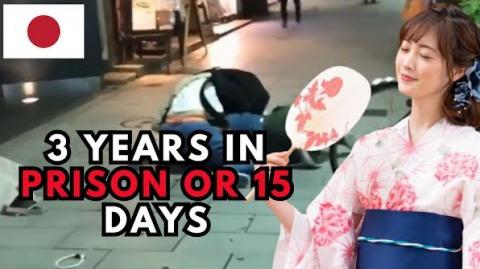
 NerokeFive
NerokeFive
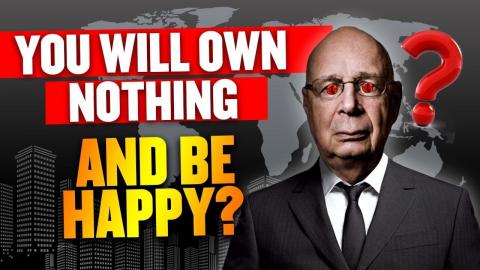
 Richie From Boston
Richie From Boston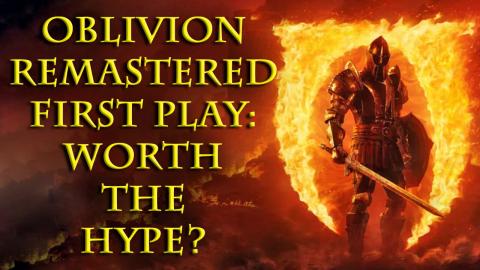
 Better Bachelor
Better Bachelor
 The David Knight Show
The David Knight Show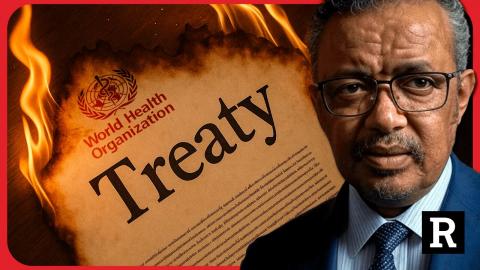
 Redacted News
Redacted News
 RedKnight
RedKnight
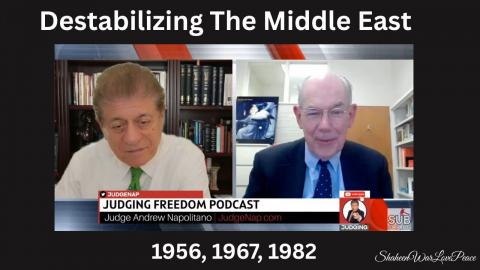
 JudgeNapolitano
JudgeNapolitano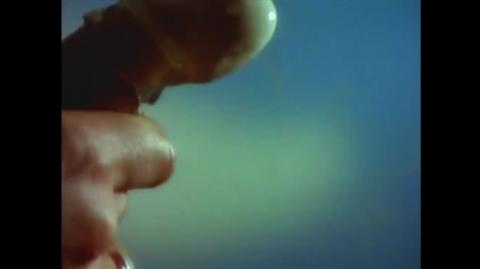
 Life_N_Times_of_Shane_T_Hanson
Life_N_Times_of_Shane_T_Hanson

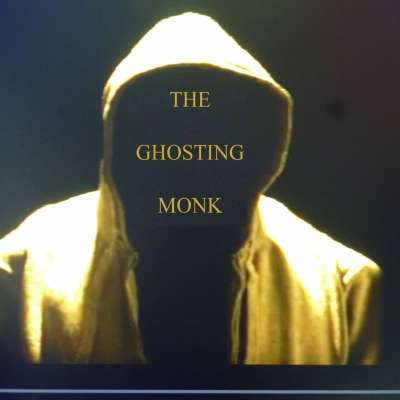 mrghoster
mrghoster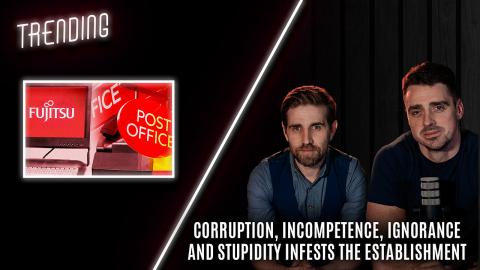
 David Icke
David Icke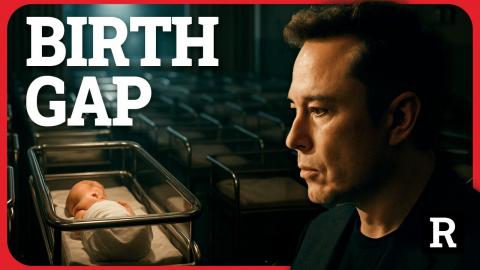

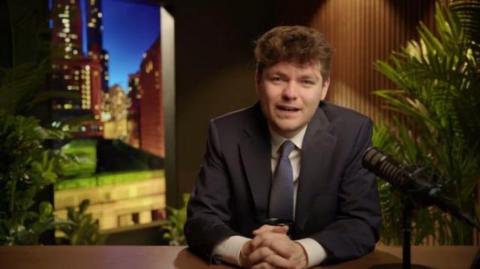
 LiberumArbitrium
LiberumArbitrium
 Styxhexenhammer666
Styxhexenhammer666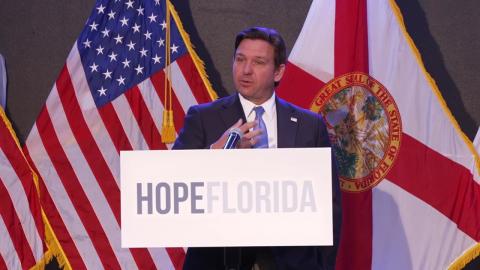
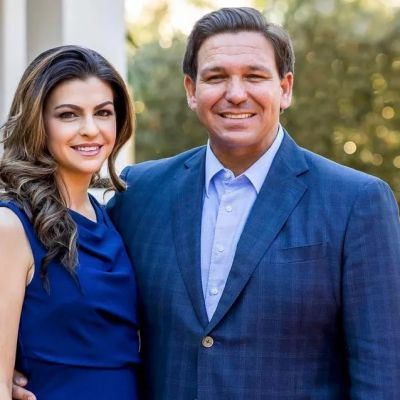 Ron DeSantis
Ron DeSantis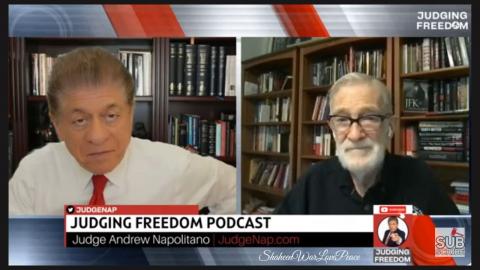



Log in to comment